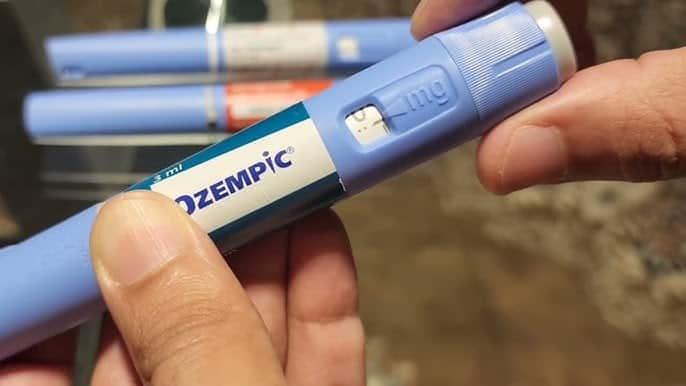Ozempic, a medication initially developed to manage type 2 diabetes, has rapidly gained popularity as a weight loss solution. Its appetite-suppressing effects have attracted a wide audience, from celebrities to everyday individuals seeking quick results. However, this surge in off-label use has sparked concerns among healthcare professionals. Reports of severe side effects, misuse, and a growing black market have led some to describe this situation as an “Ozempic epidemic”. This article explores the factors contributing to this phenomenon, the intended use of Ozempic, and the potential risks associated with its misuse.
The Ozempic Epidemic is a Growing Concern
The term “Ozempic epidemic” reflects the rapid and widespread use of the drug beyond its original purpose. Originally prescribed for type 2 diabetes, Ozempic’s weight loss effects have made it a sought-after solution for obesity. In 2024, approximately 12% of U.S. adults reported using GLP-1 drugs like Ozempic, with usage rising to 43% among those diagnosed with diabetes. This trend has been fueled by social media endorsements and celebrity testimonials, leading to increased demand and off-label use.
The surge in popularity has also led to unintended consequences. A study published in the Annals of Internal Medicine revealed that nearly 25,000 emergency room visits between 2022 and 2023 were linked to weight loss drugs like Ozempic, primarily due to severe gastrointestinal complications. These incidents highlight the risks associated with unsupervised use and the importance of medical oversight.
Furthermore, the high demand has given rise to a black market for weight loss drugs. In Scotland, health officials have reported a surge in illegal sales of semaglutide, the active ingredient in Ozempic, with concerns about counterfeit products and unsafe administration methods. This underground market poses significant health risks to individuals seeking quick fixes without proper medical guidance.
Intended Use and Mechanism
Ozempic, known generically as semaglutide, is a GLP-1 receptor agonist designed to improve blood sugar control in adults with type 2 diabetes. It works by stimulating insulin secretion, suppressing Glucagon release, and slowing gastric emptying, thereby regulating blood sugar levels. These mechanisms also contribute to a feeling of fullness, which can lead to weight loss.
While Ozempic is not officially approved for weight loss, its appetite-suppressing effects have led to off-label use for this purpose. The drug’s popularity has been amplified by social media trends and celebrity endorsements, creating a perception of it as a miracle weight loss solution. However, using the drug solely for weight loss without medical supervision can be dangerous and is not recommended by healthcare professionals.
The World Health Organization is considering endorsing GLP-1 receptor agonists like Ozempic for treating obesity, recognizing their potential benefits. However, this endorsement would come with guidelines to ensure safe and appropriate use, emphasizing the importance of medical supervision and the need to address underlying health conditions alongside weight management.
Potential Side-Effects and Risks
Common side effects of Ozempic include nausea, vomiting, diarrhea, stomach pain, and constipation. While these symptoms are generally mild and temporary, more severe complications have been reported. Cases of pancreatitis, gallbladder inflammation, and gastroparesis have been associated with Ozempic use, particularly when taken without medical supervision.
Aesthetic concerns have also emerged, with terms like “Ozempic face” and “Ozempic mouth” describing facial volume loss and sagging skin resulting from rapid weight loss. These changes can be distressing and may lead individuals to seek cosmetic procedures to restore their appearance. So, if you are a plastic surgeon, this may be music to your ears.
Moreover, discontinuing the drug often leads to weight regain, as the effects of the drug on appetite and metabolism diminish. This cycle of weight loss and regain can have psychological impacts, including anxiety and depression, and may contribute to disordered eating patterns. It is crucial to approach weight management holistically, addressing behavioral and emotional factors alongside any medical interventions.
Conclusion
The rising use of Ozempic as a weight loss solution highlights the complexities of addressing obesity and the allure of quick fixes. While the drug offers benefits for individuals with type 2 diabetes, its off-label use without medical supervision poses significant risks. The emergence of side effects, the potential for misuse, and the growth of a black market underscore the need for caution and informed decision-making. Weight management should be approached comprehensively, considering medical, psychological, and lifestyle factors to ensure safety and long-term success.








